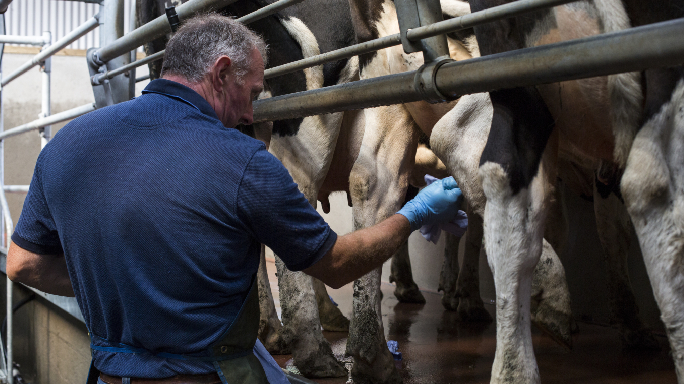Top tips on controlling TBC and Thermodurics this spring

A key area on farm which can be a cause of a huge TBC spike is a poorly washed bulk tank.
Most farms will now be headed towards peak production and outside temperatures are on the rise. All of this puts pressure on bulk tanks on farms. The majority of bulk tanks are now operating an auto wash system and are generally of an enclosed design, this means any problems with the wash system can easily go unnoticed. It is important that a visual inspection is done on the internal surfaces of the tank after each collection and wash.
It is difficult to do a good inspection of a bulk tank without using a good quality torch, any build up found needs to be investigated immediately.
One frequent problem area is a build-up of milk fats on the agitator blades / paddles caused by blocked jetters in the wash system. If the surfaces of the tank do not appear to be clean, it indicates a failure in the wash system.
Some points to look out for:
• Is the washer sucking up enough detergent? (Check manufacturer specs)
• Is water hot enough?
• Is there enough water pressure?
If you have recently changed to a new chlorine free detergent, check has the tank washer been recalibrated to the required specifications set out by the detergent manufacturer. Coolers not switching on or tripping out is also a major issue. Suppliers are encouraged to have a warning system in place to alert them to any fault in the system. If coolers have been off for an extended period, contact your Milk Quality Manager immediately so milk can be assessed for suitability of collection.
Thermodurics
As temperatures begin to rise, we usually begin to see an increased incidence of thermoduric failures at farm level.
Two key areas to control thermoduric levels in milk are:
1. Teat preparation
With cows grazing outdoors during dry weather, farmers can tend to neglect teat prep, as cow’s udders will appear clean. In reality, the teats can still be coated in dry dust containing thermoduric causing bacteria. Key steps are to wash teats and dry them thoroughly, using an individual paper wipe for each cow, before attaching the cluster.
Gathering yards, access passages and road ways all need to be kept as clean as possible. Cow’s tails should be kept clipped.
2. Properly cleaned Milking Machine & Parlour
With the switch to chlorine free wash routines across our supplier pool 12 months ago, a lot of work has been done to ensure farmers have adopted the correct wash routines and using GI recommended detergents. There may be a tendency when busy to become complacent and allow wash routines to slip, move back to an inferior detergent or simply cut corners.
In such cases, eventually a thermoduric issue will arise as a ‘Biofilm’ begins to build on internal surfaces. It is vital to maintain high standards when it comes to washing the milking machine and that all external surfaces of milking equipment are kept clean, such as, cluster shells, lines and milk tubing.
If you require any further information please contact your local Milk Quality Manager.
First Published: 26 April 2021
Tagged with: Dairy
